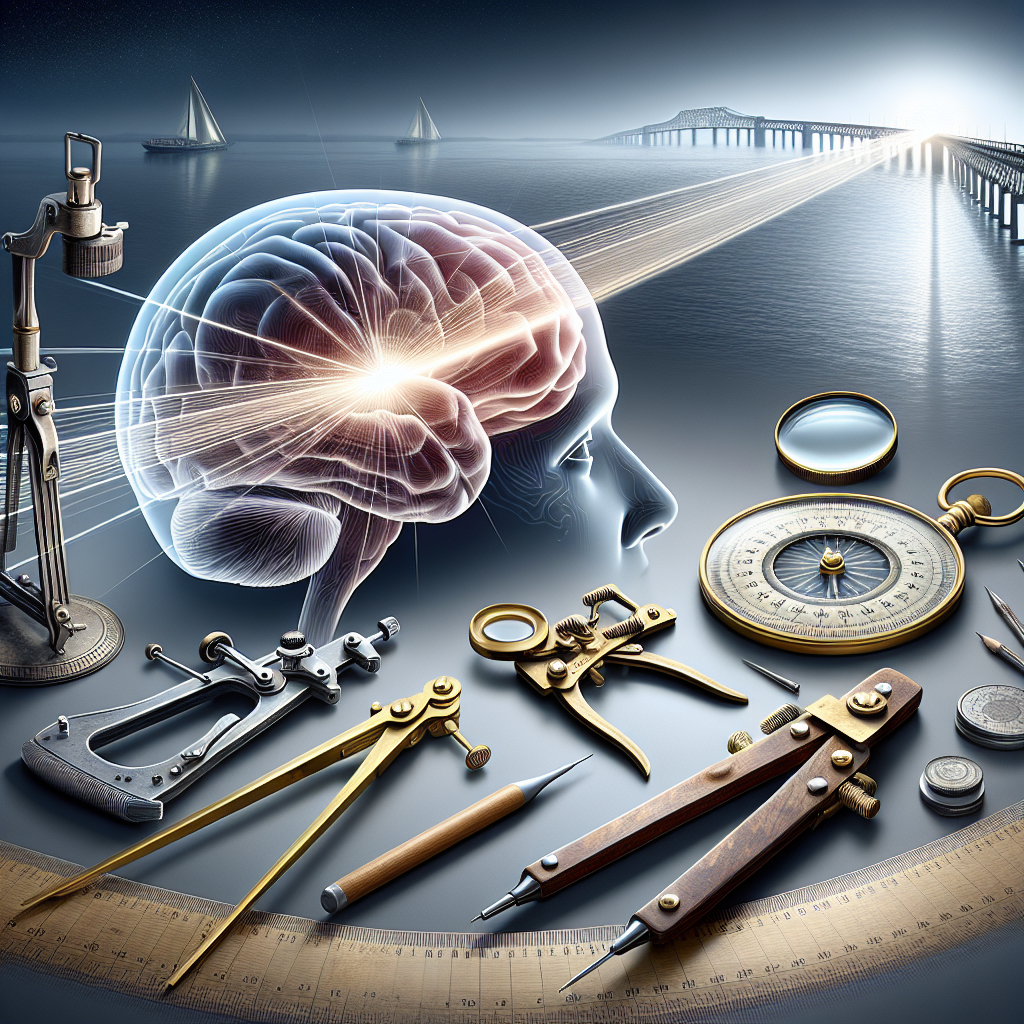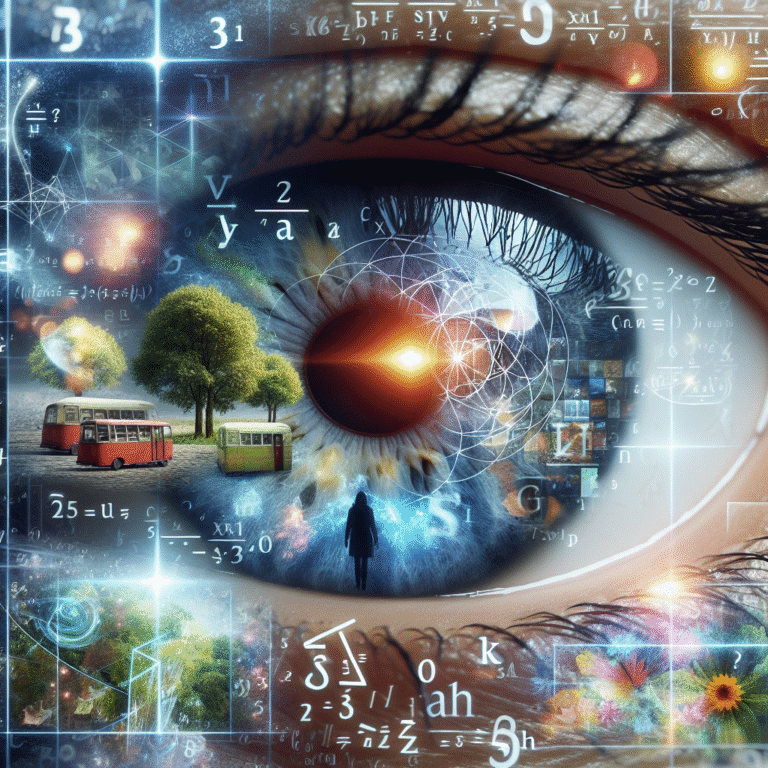
Introduction
Imagine standing on a beach, the sun warming your skin, the sound of waves rhythmically crashing against the shore. Your senses are alive — the salty ocean breeze fills your lungs, and the vibrant colors of the horizon overwhelm your visual perception. Yet, what if I told you that what you experience is merely a fraction of reality, filtered through the lens of your own unique mind? This interplay between perception and the external world is at the heart of psychophysics, a fascinating field that measures the elusive nature of human perception.
In this article, we will dive into the realm of Measuring the Mind: How Psychophysics Bridges Perception and Reality. We will explore the principles of psychophysics, discuss pivotal theories and experiments, and illustrate how this field informs various aspects of our daily lives — from marketing strategies to mental health treatments. Get ready for a journey that harmonizes the intricate relationship between mind and reality.
What is Psychophysics?
Psychophysics is a branch of psychology that quantitatively studies the relationship between physical stimuli and the sensations and perceptions they produce. Founded in the 19th century by Gustav Fechner, this discipline seeks to understand how the mind translates physical energy (like light and sound) into perceptual experience.
Key Concepts in Psychophysics
-
Thresholds: This includes the absolute threshold (the smallest intensity of a stimulus that can be detected) and the difference threshold (the smallest change in a stimulus that can be detected).
-
Weber’s Law: This principle states that the ratio of the increment threshold to the background intensity is a constant. This means that the required change in a stimulus is proportional to its initial intensity — a crucial insight for understanding human perception.
- Signal Detection Theory: This theory emphasizes that perception is not merely a matter of sensory input, but also involves decision-making processes and the context in which stimuli are presented.
The Science Behind Measuring the Mind
The quantitative nature of psychophysics offers a precise method for understanding perception. Through systematic experimentation, researchers can measure how changes in stimulus properties lead to detectable differences in perceptual experiences.
Case Study: The Visual World
Consider a classic experiment in visual psychophysics, where subjects view two colored patches side by side. By gradually changing the hue of one patch while keeping the other constant, researchers can determine the point at which observers can no longer distinguish between the two. This experiment reveals not only the limits of human perception but also the remarkable adaptability of our visual system.
Relevance to Measuring the Mind
This illustrates how Measuring the Mind: How Psychophysics Bridges Perception and Reality can aid in understanding the complexities of human vision, ultimately informing everything from graphic design to the development of visual technologies in augmented reality.
Applications of Psychophysics in Everyday Life
While the scientific principles of psychophysics might seem abstract, their applications permeate various fields, influencing products, services, and even therapies.
Marketing and Advertising
Brands utilize psychophysical principles to gauge consumer reactions. For instance, sound frequency and color schemes can psychically alter consumer perception and mood.
| Application | Psychophysical Principle | Outcome |
|---|---|---|
| Color psychology in branding | Color thresholds | Enhanced emotional response |
| Sound design in commercials | Auditory thresholds | Increased product recall |
Case Study: Color and Consumption
Research has demonstrated that colors can influence consumer perceptions. Fast-food chains often use red and yellow, which are known to incite feelings of hunger and urgency. By measuring the impact of these colors on consumer behavior, marketers leverage psychophysics to optimize their branding strategies.
Analysis
This case underscores how Measuring the Mind: How Psychophysics Bridges Perception and Reality directly informs business practices, making psychological insights applicable in a competitive market.
Healthcare and Therapy
Psychophysics also plays a vital role in mental health treatment. By measuring patient perceptions and their psychological reactions to therapy, practitioners can better tailor interventions.
Case Study: Pain Perception
Medical professionals often rely on psychophysical methods to evaluate and manage pain. Through standardized scales and measures, clinicians assess pain thresholds among different patient populations.
| Method | Application | Impact |
|---|---|---|
| Visual Analog Scale | Self-reported pain levels | Better individualized treatment |
| Pressure Threshold Tests | Objective measurement | Enhanced clinical assessment |
Relevance
By measuring pain perception, healthcare providers can bridge the gap between subjective experience and objective treatment, highlighting how Measuring the Mind: How Psychophysics Bridges Perception and Reality influences healthcare delivery.
The Philosophical Implications of Psychophysics
The study of psychophysics raises fundamental questions about the nature of reality and human cognition. As we measure perception, we must ponder the implications of what we learn about consciousness itself.
Constructed Realities
Our perceptions are shaped by both external stimuli and internal mental processes. The way we interpret information may differ vastly among individuals based on a myriad of factors, including culture, past experiences, and even expectations.
A Broader Perspective
Psychophysics encourages a dialogue about the subjectivity of experience. If we consider reality to be the sum of our perceptions, how might this understanding transform our interactions with others?
Conclusion
Measuring the Mind: How Psychophysics Bridges Perception and Reality offers invaluable insights into the mechanisms that govern our understanding of the world. From visual and auditory experiences to marketing and healthcare applications, psychophysics shapes the way we navigate daily life.
As we have explored, the principles of psychophysics provide a framework that not only quantifies perception but also enhances the quality of our experiences. This understanding empowers us to better interact with both our environment and each other.
So, the next time you find yourself engrossed in a vivid sunset or captivated by a piece of music, remember that your senses are weaving a narrative — a remarkable story that embodies the very essence of what it means to be human.
FAQs
1. What is the main focus of psychophysics?
Psychophysics primarily explores the relationship between physical stimuli and the perceptual experiences they evoke in humans.
2. How do thresholds work in psychophysics?
Thresholds help measure the minimum intensity of a stimulus required for it to be detected (absolute threshold) and the smallest detectable change in stimulus intensity (difference threshold).
3. Where is psychophysics applied?
Psychophysics finds applications in marketing, healthcare, technology, and even art, helping understand and optimize human perception.
4. Can psychophysics inform mental health treatments?
Yes, psychophysical measurements can inform personalized therapy approaches by assessing individual perceptions of conditions like pain or anxiety.
5. Why is measuring perception important?
Understanding how we perceive our environment can influence various domains, from product design to treatment methodologies in clinical settings, enhancing overall human experience.
By examining the intricate relationship between perception and reality, psychophysics enables us to navigate the complexities of our experiences and interactions more effectively. As we continue to unravel the layers of the mind, we come closer to answering the age-old questions about what it truly means to perceive and to be alive.














